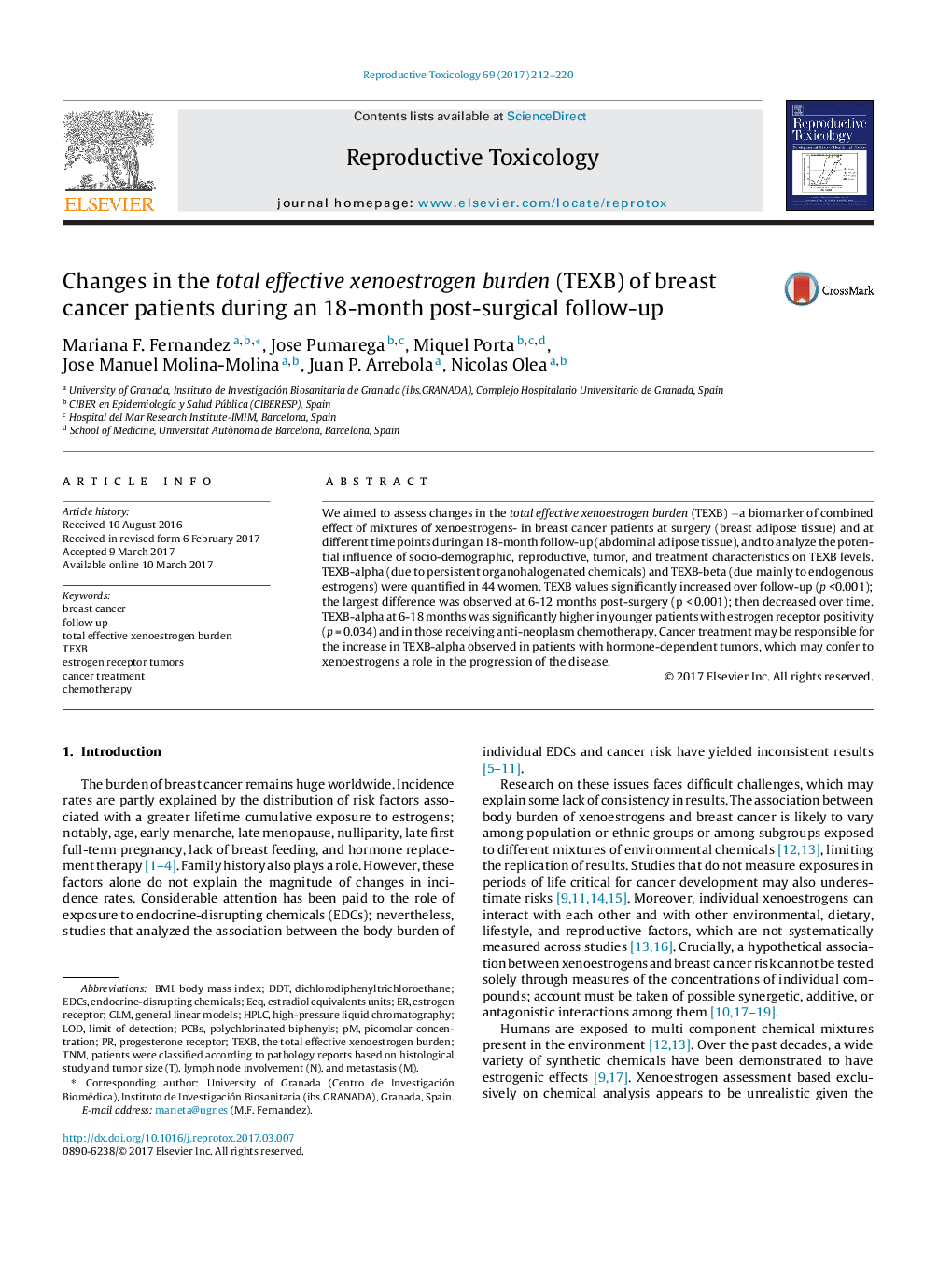| Article ID | Journal | Published Year | Pages | File Type |
|---|---|---|---|---|
| 5561597 | Reproductive Toxicology | 2017 | 9 Pages |
Abstract
We aimed to assess changes in the total effective xenoestrogen burden (TEXB) âa biomarker of combined effect of mixtures of xenoestrogens- in breast cancer patients at surgery (breast adipose tissue) and at different time points during an 18-month follow-up (abdominal adipose tissue), and to analyze the potential influence of socio-demographic, reproductive, tumor, and treatment characteristics on TEXB levels. TEXB-alpha (due to persistent organohalogenated chemicals) and TEXB-beta (due mainly to endogenous estrogens) were quantified in 44 women. TEXB values significantly increased over follow-up (p <0.001); the largest difference was observed at 6-12 months post-surgery (p < 0.001); then decreased over time. TEXB-alpha at 6-18 months was significantly higher in younger patients with estrogen receptor positivity (p = 0.034) and in those receiving anti-neoplasm chemotherapy. Cancer treatment may be responsible for the increase in TEXB-alpha observed in patients with hormone-dependent tumors, which may confer to xenoestrogens a role in the progression of the disease.
Keywords
PCBsEEQTNMdichlorodiphenyltrichloroethaneGLMEDCsPolychlorinated biphenylsLOD یا Limit of detectionCancer treatmentDDTBreast cancerbody mass indexBMIChemotherapylimit of detectionGeneral linear modelsEndocrine-disrupting chemicalsFollow uphigh-pressure liquid chromatographyHPLCEstrogen receptorProgesterone receptor
Related Topics
Life Sciences
Environmental Science
Health, Toxicology and Mutagenesis
Authors
Mariana F. Fernandez, Jose Pumarega, Miquel Porta, Jose Manuel Molina-Molina, Juan P. Arrebola, Nicolas Olea,
